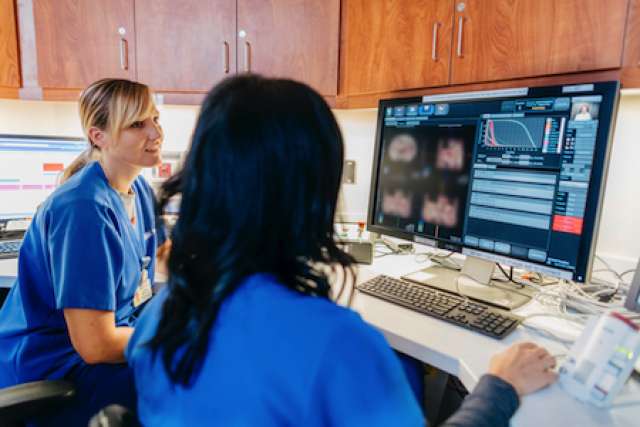Costs are on the rise for many kinds of medical treatments. UCLA researchers are looking for cost-effective ways to treat people who have locally advanced rectal cancer, a cancer located in the end section of the large intestine.
"There is a pressing need for cost-effectiveness studies within the field of radiation oncology," said Dr. Ann Raldow, the study's first author and a member of the UCLA Jonsson Comprehensive Cancer Center. "As our treatments become more technical and expensive, it is our responsibility to prove that these treatments lead to benefits that warrant the increased cost and that limited resources are allocated appropriately."
To find the most cost-effective ways to treat this type of cancer, the researchers compared two common treatments, long-course chemoradiotherapy and short-course radiotherapy.
Long-course chemoradiotherapy is currently the standard of care in the United States for treating locally advanced rectal cancer. This treatment requires 28 radiation treatments with chemotherapy. However, outside the United States, such as in countries throughout Europe, short-course radiotherapy involving five treatments is more common. Both treatments are associated with similar treatment outcomes.
The UCLA researchers developed a mathematical model to evaluate the cost-effectiveness of these two treatments. The model simulated 10-year outcomes for hypothetical 65-year-old patients. The hypothetical patients had locally advanced rectal cancer and were treated with one of the two therapies. They also underwent surgery and chemotherapy. The researchers took costs for the two treatment approaches from the Healthcare Bluebook and Medicare Fee schedules, which provide typical costs for medical treatments across the U.S.
The researchers found that, with an incremental cost-effectiveness ratio of $133,495 per quality-adjusted life year, short-course radiotherapy was the more cost-effective treatment as compared to long-course chemoradiotherapy. The quality-adjusted life year is a way to measure the cost-effectiveness of medical treatments that takes into consideration the length and quality of a patient's life. The incremental cost-effectiveness ratio was calculated by dividing the difference in cost by the difference in health outcome of the two approaches.
For patients who had distal tumors, which are tumors close to the anus, long-course chemoradiotherapy was more cost-effective, with an incremental cost-effectiveness ratio of $61,123 per quality-adjusted life year. The reason this is more cost-effective is that long-course chemoradiotherapy can shrink tumors away from the sphincter muscles, which can help to avoid a surgery that results in a life-long colostomy bag.
UCLA researchers presented the findings at the American Society for Radiation Oncology in San Antonio in October 2018.
The study is published in JAMA Network Open.
Funding for the research was provided by a 2018 Richard Merkin Stop Cancer Seed Grant.
Other authors of the study include Dr. Aileen Chen, Dr. Marcia Russell, Dr. Percy Lee, Dr. Theodore Hong, Dr. David Ryan, Dr. James Cusack and Dr. Jennifer Wo.




